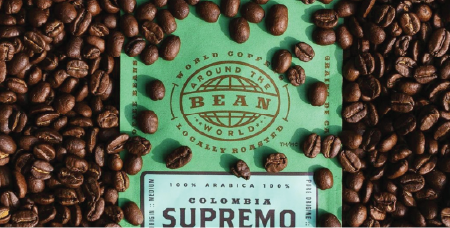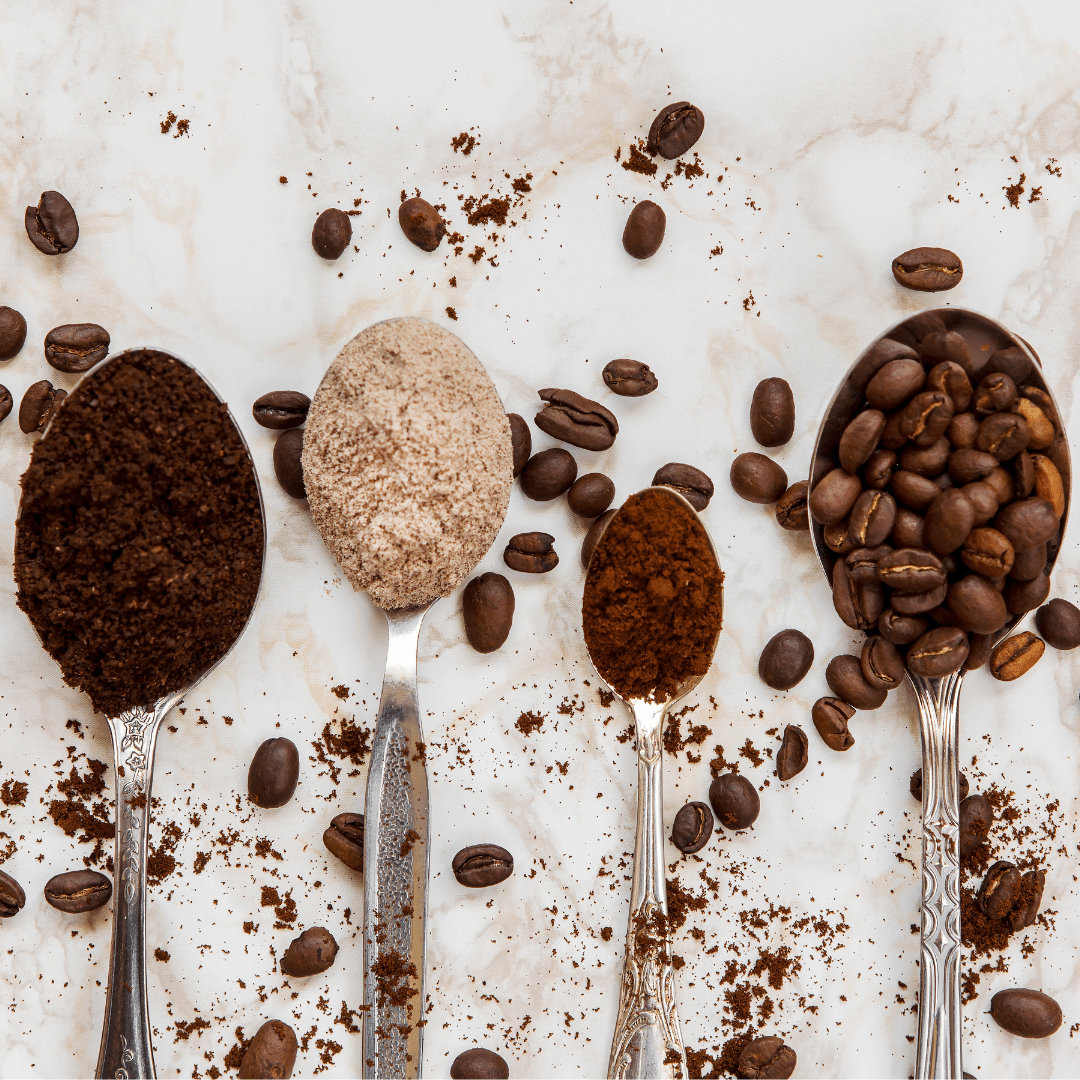Coffee lovers always look for the best coffee experience - whether they are at home or at their favourite coffee shop.
If you’re a casual coffee drinker, you may not know the finer details about the cups you drink. Without this added knowledge, you could be missing out on a world of flavours and experiences that are more suited for your palate.
Our job here at Bean Around The World is to help everyone fall a little more in love with their morning cup of joe… and on our blog that means helping you understand coffee more, so you can try something new and find what is right for you… even when you’re at home!
In this article, we'll explore one of the most important and easy-to-adjust coffee brewing elements: the grind.
- How Does the Size of Coffee Grounds Affect the Taste?
- Types of Coffee Grinds to Try at Home
- Find your Grind at Bean Around The World
- The Rules of Coffee Grinding + Types of Coffee Grinders
Let's dive in.

How Does the Size of Coffee Grounds Affect the Taste?
Have you ever brewed coffee at home and felt disappointed by the taste? It may come down to your grind.
Our goal in choosing a grind size is always to extract the perfect amount of flavor from our coffee.
Even the highest quality coffee, roasted to perfection, brewed with the purest water and the most excellent coffee maker can be ruined with an improper grind.
The goal of coffee grinding is to break down the roasted coffee bean, expose the interior, and allow water to make contact with more coffee particles and extract the right amount of oils and flavours within. The more contact there is, the greater the flavour extraction.
In other words, the grind size you’ll use impacts the coffee’s flavour once it comes into contact with water.
The coarser the grind, the faster water will move through the coffee - extracting less.
The finer the grind, the slower water passes through - extracting more.
Less contact typically means the coffee is less strong, and vice versa for more.
As a rule of thumb, if you find your coffee tasting too sour or watery, you might need to grind your beans finer to allow more flavour extraction. If your coffee tastes bitter or too acidic, grind your beans coarser.
If you want an easy way to remember this, try imagining filling two vessels with water - one vessel has big chunky rocks, and the other has the finest sand.
So why not always brew fine grounds if this extracts more flavor?
Well, different coffee brewing systems require different types of coffee grinds, so it all comes down to your personal taste. We’ll go over this in the next section.

Types of Coffee Grinds to Try at Home
Use the following guidelines to determine the correct grind for your brew method, then take note of the flavor profiles of your brews and adjust the coarseness based on your taste buds’ preference.
Extra Coarse Grind
Extra coarse coffee is perfect for long brews - particularly making cold brew.
Coarse Grind
Coarsely ground coffee beans allow water to pass through its larger pieces more quickly, and so must be brewed a bit longer so that more flavour is extracted.
This grind is perfect for brew methods that immerse the grounds in water, like a French Press! Brew between 4-5 minutes in a French Press for a perfect brew.
Medium-Coarse Grind
Slightly smoother than coarse but still fairly large, a medium course grind is perfect for the Chemex glass pour-over coffee maker or the Clever dripper brewing methods.
Medium Grind
The texture of a medium grind is similar to sand - perfect for flat bottom drip coffee machines.
Medium-Fine Grind
This grind is like a silky sand that doesn’t stick together or compress - perfect for cone-shaped pour-over brewers.
Fine Grind
Finely ground coffee beans are packed more closely, meaning water takes much longer to pass through. This means the water has more time to extract flavour compared to coarse grinds.
The texture is silky fine and smoother than table salt - perfect for espresso machines because it packs down well. Because of the tiny size of this grind, you also need much less time to brew espresso than when using a French Press.
Extra Fine Grind
This extra fine grind is typically reserved for Turkish coffee - a style of coffee prepared in a cezve using very finely ground coffee beans without filtering.

Find your Grind at Bean Around The World
Now that you have a general overview of each grind size and when you’d use it, we’re here to help you find your starting point. We offer our small-batch, internationally sourced coffees in 4 different grind options to help you find your dream brew.

In photo: Guatemala Santa Clara Whole Bean:
Endearingly known as our “schoolhouse blend” amongst the roasters, proceeds from this roast go towards funding our school in Guatemala.
Tastes like: chocolate, caramel, sweet
Bean Around The World Whole Bean Coffee
Buying whole bean coffee in bulk is a great option to stay economical and keep your coffee fresh longer while opening up your home brewing to a wide variety of brewing options.
If this sounds like you, we recommend the Guatemala Santa Clara Whole Bean.

In photo: Colombian Supremo 17/18:
A no-nonsense roast perfect as a daily sipper.
Aromatic vanilla flavors add a subtle sweetness to your cup.
Tastes like: vanilla, smooth, bright
Bean Around The World Coarse Ground
If you want to make cold brew at home, or if French Press is your preferred brewing method, choose a coarse ground like the Colombian Supremo 17/18.
In photo: Rainforest Organic Flat Bottom Ground:
Ignite your palate with this rich, earthy dark roast.
A cult classic guaranteed to warm you up on a rainy day.
Tastes like: chocolate, spicy, earthy
Bean Around The World Flat Bottom Ground
This is a medium-fine grind coffee perfect for typical flat bottom coffee makers. This type allows water to consistently filter through the grounds.
Choose something like the Rainforest Organic if you foresee yourself mostly brewing using your drip machine.

In photo: Espresso Organic Blend:
From farm to roast to cup a lot goes into extracting the perfect espresso.
Well balanced and multi-faceted.
Tastes like: caramel, toasty, sweet
Bean Around The World Espresso Ground
This is a fine grind that resembles sugar in texture and sticks together - ideal for espresso machines as well as recipes and cocktails that require coffee as an ingredient.
We suggest the Espresso Organic Blend if this sounds like what you need.
The Rules of Coffee Grinding
Finally, we leave you with 4 rules of coffee grinding. These are some tips to keep in mind to ensure an optimal brew, every time.
It’s best to grind your coffee right before you are ready to brew.
However, this isn’t always realistic! If you must, pre-grind your beans when you have time - then use an airtight container to lock out moisture and odours before storing the grounds in the freezer for use.
Choose the right grind size.
Use our guide above to determine the right size for your brewing method.
Select and use a high quality coffee grinder.
There are 3 types of coffee grinders:
-
Blade Grinders: These are the most inexpensive types of grinders. The longer you grind the bean, the finer it gets - although the size may be inconsistent, and the heat generated can affect the taste. However, this is a low cost option that does the job and takes up very little space - perfect for most coffee lovers with small kitchens.
-
Burr Grinders: These grinders crush the beans against a static surface with a grinder wheel. The grind is set by the position of the burr. This results in a much more accurate and consistent grind than a blade grinder.
- Manual Grinders: This type grinds your coffee when you turn a crank - the sizse of grounds determined by your grinding time. This is perfect for traveling or camping trips.
Keep your coffee grinder clean.
This is an easy way to ensure each brew tastes as it should.
Ready for a brew?
We hope this blog inspires you to grab a bag of whole beans and try grinding your own coffee!
See you soon at your favourite Bean Around the World.



